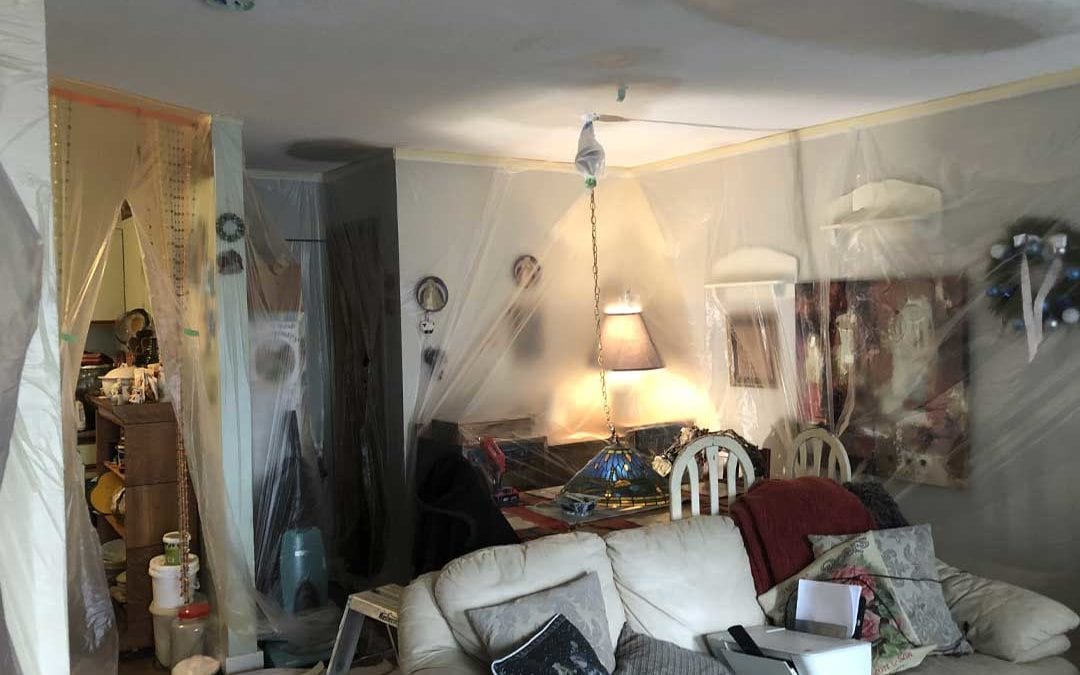Need Repair in The Great Vancouver Abbotsford Areas – Contact Us >
As a seasoned industry tradesman, I’ve witnessed the evolution of interior wall systems over the years. From traditional brick walls to modern gypsum-based drywall, the construction landscape has seen significant changes. In this article, we’ll delve into various aspects of drywall, comparing it with other wall systems, discussing repairs and replacements, exploring health concerns, and addressing common questions in the Australian context.
Drywall vs. Brick Wall: A Historical Shift
The transition from brick walls to drywall has been a pivotal moment in the construction industry. Brick walls, once the gold standard for structural integrity and insulation, have given way to drywall for several reasons. Drywall offers flexibility in design, cost-efficiency, and ease of installation compared to the labor-intensive process of laying bricks. It also provides better insulation, reducing energy consumption and making interiors more comfortable.
Drywall Over Drywall: A Time-Saving Solution
When dealing with existing drywall, the question of whether to install new drywall over the old arises. This method can save time and effort while minimizing dust and disruption. However, it’s crucial to assess the condition of the existing drywall. If it’s significantly damaged, replacing it might be a more sensible option.
Repair or Replace Drywall: The Decision-Making Dilemma
Determining whether to repair or replace damaged drywall depends on various factors. Minor cosmetic issues like small cracks or dents can often be patched and painted, but extensive water damage or mold growth may necessitate replacement. Professional assessment is essential to make the right call and ensure the longevity of your wall system.
Replacing Moldy Drywall: A Health Priority
Mold growth on drywall is a serious concern, not just for structural integrity but also for health. Mold spores can trigger respiratory problems and allergies. When dealing with moldy drywall, it’s crucial to address the source of moisture, remove and replace affected sections, and take necessary precautions to prevent future growth.
Drywall Terminology in Australia
In Australia, drywall is often referred to as “plasterboard” or simply “gyprock.” Understanding the local terminology is essential when discussing construction and renovation projects. Gyprock, made from gypsum, is the most common material used for interior walls and ceilings in Australian homes.
Gypsum Board vs. Drywall: A Global Comparison
Gypsum board and drywall are terms used interchangeably in many regions. Both refer to the same material, typically consisting of gypsum sandwiched between layers of paper. This versatile building material has become a staple in construction due to its ease of installation, fire resistance, and soundproofing properties.
Drywall Dust Health Risks: A Silent Threat
Drywall installation and sanding produce fine dust particles that pose health risks to both tradesmen and homeowners. Prolonged exposure to drywall dust can lead to respiratory issues and skin irritation. Proper dust containment and personal protective equipment are essential precautions.
Drywall Mold Growth: Identifying and Preventing
Mold growth on drywall is a common problem, particularly in moist environments. Adequate ventilation and moisture control are crucial in preventing mold. When it does occur, prompt remediation is necessary to prevent further damage and health concerns.
Drywall Aging and Cracking: Understanding the Process
Over time, drywall can age and develop cracks. This natural aging process can be exacerbated by factors like settling, temperature fluctuations, and humidity. Proper maintenance and occasional repairs can extend the lifespan of drywall and maintain the aesthetics of a space.
Cost to Replace Plaster with Drywall
Replacing plaster with drywall is a significant renovation project that offers many benefits, including improved insulation and aesthetics. The cost varies depending on factors like the size of the space, labor costs, and material prices. It’s essential to obtain accurate estimates from contractors to budget accordingly.
Disuse of Plaster Walls: A Nostalgic Reflection
The shift towards drywall has led to the disuse of traditional plaster walls. While drywall offers advantages in terms of cost and ease of installation, plaster walls hold a certain nostalgic charm and craftsmanship that some homeowners still appreciate.
Asbestos in Plaster Walls: An Old Hazard
In older buildings, asbestos may be present in plaster walls. This hazardous material poses serious health risks when disturbed. Before renovating or removing plaster walls, it’s crucial to test for asbestos and follow proper safety protocols if it’s detected.
Painting Plaster Walls vs. Drywall: Aesthetic Considerations
Both plaster and drywall can be painted to achieve a desired look. However, plaster walls often require more preparation work due to their uneven surfaces. Drywall, with its smooth finish, generally provides a more straightforward canvas for painting.
Replacing Plaster Ceiling with Drywall: A Ceiling Transformation
Transforming a plaster ceiling into drywall can modernize a space and improve insulation. This process involves careful removal and disposal of the old plaster while ensuring structural integrity and safety during installation.
Conclusion
The construction industry’s transition from traditional brick walls to gypsum-based drywall has revolutionized interior spaces. From understanding the nuances of drywall terminology in Australia to addressing health concerns like mold growth and asbestos hazards, it’s crucial for tradesmen and professionals to stay informed and adapt to evolving construction practices. Whether it’s repairing, replacing, or upgrading wall systems, the skilled tradesman’s expertise plays a vital role in shaping the spaces we live and work in.





